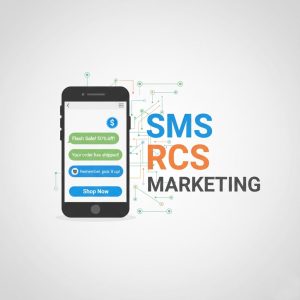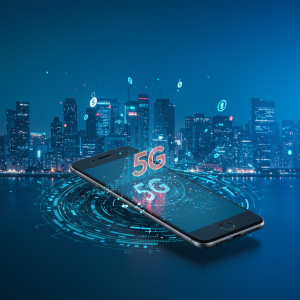How Does Mobile Marketing Work? A Complete Guide

Mobile marketing has now been embraced by companies as a highly effective and new way to obtain customers. But exactly how does this powerful tactic of marketing operate, and what use can you make of it yourself? If you want to integrate mobile marketing into your strategy, this is where you belong.
This guide will take you through both the ins and outs of mobile marketing, how it works however that is approached, and why no matter the size or type of enterprise involved businesses can count on this medium to be a real game changer for them. Moreover, when you have finished reading this guide, not only will you understand better what mobile marketing is but you will also know what kind of strategies are likely to enhance your marketing efforts fruitfully and reach out more effectively towards your audience.
What Is Mobile Marketing?
Reaching consumers through their mobile devices is a broad concept that encompasses anything at all designed to engage and reach people on phones. Nowadays, with wide selection of tools and channels integrated onto a mobile device, companies can use these means to sell their products or services directly from the handset including smartphones, tablets and wearable technology It is.
From launching SMS campaigns to grabbing audience through mobile applications and location-based ads, mobile marketing offers a variety of arenas in which to talk with customers, wherever they’re actual.
Why Focus on Mobile Marketing?
The numbers speak for themselves. According to a study by Statista, over 92% of internet users access the internet via a mobile device. With the average person spending 4.8 hours per day on their smartphone, mobile marketing offers businesses unparalleled access to their audience’s attention.
Whether you’re a local business looking to draw in foot traffic or an e-commerce store aiming for online sales, focusing on mobile marketing allows you to connect deeply with your audience.
Key Benefits of Mobile Marketing
- Wider Reach – With billions of mobile devices globally, you can connect with a vast, untapped audience.
- Personalization – Mobile data allows you to target users by location, browsing habits, and more.
- Real-Time Engagement – Connect with customers immediately through push notifications and SMS campaigns.
- Improved Conversion Rates – With tailored messages, consumers are more likely to take action, whether that’s making a purchase or signing up.
6 Key Components of Mobile Marketing

Breaking down what makes mobile marketing work can help you understand how to make it effective. Here are the critical tools and strategies that define mobile marketing today.
1. SMS and MMS Marketing
Text messaging remains one of the oldest yet most effective forms of mobile marketing. With an open rate of 98% for SMS, it’s a highly impactful way to communicate directly with your audience.
📱 How it works:
- SMS (Short Message Service): Send concise text-based messages to promote offers or updates.
- MMS (Multimedia Messaging Service): Include rich media like images or videos in your messages for greater engagement.
✉️ Example:
“Hi [Name], get 20% off your next purchase! Offer valid until [date]. Show this code at checkout: SAVEMORE20.”
2. Mobile-Friendly Email Campaigns
Over 60% of email opens now occur on mobile devices. Crafting responsive, visually appealing emails ensures your message gets noticed on smaller screens.
📧 Tips for success:
- Use short and compelling subject lines.
- Design with smaller screens in mind.
- Avoid overwhelming readers with too much text or images.
3. Mobile Apps
Apps allow businesses to create deeper connections with their customers. Whether it’s through loyalty rewards, interactive features, or convenience, apps are a valuable touchpoint.
🌟 Why apps matter:
- They create brand visibility every time a user opens their phone.
- Push notifications can remind users to engage with your brand.
🍔 Example:
Fast-food chains like McDonald’s use mobile apps to offer exclusive deals and allow users to place orders seamlessly.
4. In-App Advertising
Ads embedded in apps offer a non-intrusive yet impactful way to reach users. These ads target users while they’re already engaged with an app, leading to higher visibility and conversions.
🎯 Types of in-app ads:
- Video ads
- Native ads (blend seamlessly with the app interface)
- Interstitial ads (appear between app content)
5. Location-Based Marketing
Mobile devices make it easy for businesses to engage customers based on their location. Using GPS or proximity technology, businesses can deliver highly relevant messages to users in specific areas.
📍 Examples:
- Geofencing – Send push notifications to users within a particular radius around your store.
- Beacon Marketing – Use Bluetooth beacons inside stores to send promotional messages as customers shop.
🛍️ Practical Use Case:
A clothing store can send a text message about a flash sale to users who are within 2 miles of the store.
6. Mobile SEO and Advertising
With Google prioritizing mobile-first indexing, ensuring mobile website optimization is crucial for improving search rankings. Similarly, running targeted mobile ads keeps your brand visible to potential customers.
🔍 How it works:
- Mobile SEO ensures your website is fast, easy to use, and properly optimized for small screens.
- Mobile Ads include pay-per-click (PPC) campaigns tailored for mobile platforms like Google Ads or social media.
📈 Tip:
Use concise headlines, and ensure your CTAs (Call-to-Actions) are easy to click on smaller devices to maximize mobile ad performance.
Case Studies of Mobile Marketing Success

Starbucks
Starbucks is a mobile marketing champion thanks to its loyalty app. Customers earn stars for purchases that can be redeemed for free drinks and food. Paired with push notifications and in-app offers, Starbucks ensures consistent engagement.
Nike
Nike uses location-based marketing to perfection. During major running events, they send users notifications about nearby deals or challenges via their Nike Running app. This keeps users engaged and builds brand loyalty.
Tips for a Winning Mobile Marketing Strategy
- Be User-Friendly – Always test your campaigns on different devices and platforms to ensure a seamless experience.
- Prioritize Personalization – Use data to tailor your messages to your audience.
- Track and Optimize – Continuously monitor campaign performance and refine strategies for better outcomes.
Elevate Your Marketing with Mobile
Mobile marketing is more than just a fad. It’s also how companies can reach customers right where they are.By leveraging properly the mobile devices they have with them all day long, businesses are able to build bridges to a deeper and more personal connection with their audience come even closer .If you’ re looking for actionable ideas or tools to better manage your marketing campaigns, please feel free to explore our site And combine creative data-driven strategies – turning mobile marketing into your strongest method for gaining new business.





